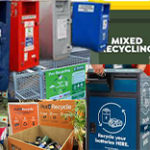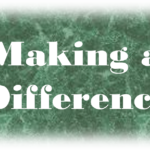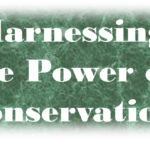
The Role of Education and Advocacy in Environmental Conservation
In the face of growing environmental challenges, education and advocacy emerge as powerful tools for driving positive change and fostering a deeper understanding of the urgent need for conservation. From raising awareness about pressing environmental issues to mobilizing communities for action, education and advocacy play a crucial role in shaping a sustainable future for our planet. In this blog post, we’ll explore the importance of educating and advocating for environmental conservation and share practical ways individuals can make a difference.
The Power of Education
Education serves as the cornerstone of environmental conservation, empowering individuals with knowledge and awareness to understand the interconnectedness of human activities and the natural world. By providing people with the information they need to make informed decisions and take meaningful action, environmental education fosters a sense of stewardship and responsibility towards the environment. From formal classroom settings to informal learning opportunities in nature, education plays a vital role in shaping attitudes, behaviors, and values that prioritize environmental sustainability.
Advocating for Change
Advocacy complements education by translating knowledge and awareness into action, mobilizing individuals and communities to advocate for policies, practices, and behaviors that promote environmental conservation. Advocacy efforts may involve raising awareness about specific environmental issues, lobbying policymakers for legislative action, organizing grassroots campaigns, and engaging in public outreach and awareness-raising initiatives. By amplifying the voices of concerned citizens and rallying support for environmental causes, advocacy serves as a catalyst for change and drives progress towards a more sustainable future.
Practical Ways to Educate and Advocate
- Raise Awareness: Use social media, community events, and educational workshops to raise awareness about pressing environmental issues, such as climate change, biodiversity loss, and pollution. Share information, resources, and success stories to inspire others to get involved and take action.
- Engage with Decision-makers: Write letters, make phone calls, and meet with elected officials to advocate for policies and legislation that support environmental conservation and sustainability. Use your voice to influence decision-makers and hold them accountable for prioritizing environmental protection.
- Support Environmental Organizations: Donate your time, resources, or expertise to environmental organizations working on conservation projects, advocacy campaigns, and community initiatives. Join volunteer efforts, participate in fundraising events, or become a member to support their work and make a tangible difference.
- Educate Yourself and Others: Stay informed about environmental issues, scientific research, and conservation efforts through reputable sources of information, such as peer-reviewed journals, documentaries, and environmental organizations. Share your knowledge with others and encourage lifelong learning and curiosity about the natural world.
- Take Action in Your Community: Get involved in local conservation projects, community cleanups, and environmental initiatives in your area. Work collaboratively with neighbors, schools, businesses, and community organizations to implement sustainable practices and create positive change at the grassroots level.
Conclusion: Empowering Individuals, Transforming Communities
Education and advocacy serve as powerful catalysts for environmental conservation, empowering individuals and communities to take action and make a difference in the world. By raising awareness, building alliances, and mobilizing support for environmental causes, we can create a more sustainable future for ourselves and future generations. Let’s harness the power of education and advocacy to inspire positive change, protect the planet, and preserve the natural beauty and biodiversity of our world.









